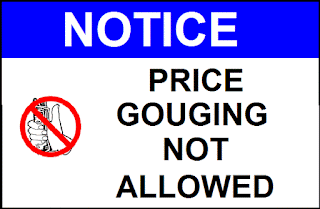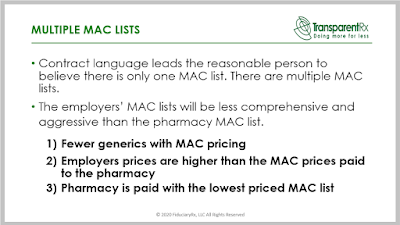All of the different PBM business models will profess how much money they can help plan sponsors save or ways to improve your pharmacy benefit plan. But what one thing none of them are doing is sharing with these same employers how much money they are making off your group. Only two business models will do that – fiduciary or radically transparent PBM models. I mean who are we kidding? Traditional, pass-through and transparent PBM business models are for the most part the same. Do any of them reveal how much money the PBM is being paid for servicing your group?
Think about this for a second. The contracts pharmacy benefit managers enter into with pharmaceutical manufacturers and pharmacies are pretty much set in stone. Unless a PBM significantly outperforms its contract, the terms between us and manufacturers won’t change until the contract has come to an end. For a PBM to outperform a contract with a pharmaceutical manufacturer or rebate aggregator would require doubling the number of lives covered, for example. If you believe this and you should, then what plan sponsors are really negotiating for come renewal is what part of the discounts a PBM has secured you will allow that same PBM to keep.
The amount of dollars a PBM keeps for itself is referred to as the PBM’s service fee. In other words, it is the fee a PBM is charging you for the services it was hired to perform. PBM service fees are a primary driver of PMPM or PEPY costs. While rebates, clinical management, and discount guarantees are important, they are also being used to distract purchasers from a key driver of their final plan costs – PBM service fees.
Don’t confuse the service fee with the admin fee. The service fee is the amount of money a PBM keeps in its bank acount after the bills are paid. An admin fee is usually a per claim, PEPM or PMPM fee which is easily quantifiable. I don’t want to confuse you but the admin fee I’m referring to is different than a manufacturer admin fee. That is a topic for another day. In many cases, the non-fiduciary PBM will offer an artificially low admin fee knowing full well acceptance means you’ve essentially given it a blank check for service fees.
Pass-through and transparent PBM business models don’t let you in on what their service fee amounts to. That is a big big problem. Unlike admin fees, service fees are not easily quantifiable primarily because non-fiduciary PBM don’t want you to know just how much their fees are contributing to your costs! The full-disclosure and fiduciary-model PBM will let employers in on their service fee or the part of negotiated discounts it will keep. The lower this fee the less employers pay plain and simple. A fair PBM service fee will bend the cost trend. Non-fiduciary PBM companies have learned how to leverage the purchasing power of the unsophisticated plan sponsor purchaser to their financial advantage.
The perception of many plan sponsors is that “AWP minus discount” and the “minimum rebate guarantee” are the two key components in evaluating the PBM proposal. The plan sponsor should take the time to investigate the cash flows to the PBM. PBM cash flow is a variable rarely considered in the evaluation of PBM proposals yet can have the most profound impact on final costs. Making what you pay a PBM, or their service fee, the primary metric in evaluating PBM proposals is a big ? idea. A fiduciary PBM will allow purchasers this level of disclosure. If a PBM is purporting to be fiduciary yet doesn’t offer this level of transparency, then at the very least it is telling half-truths.
There are two things which should be non-starters for purchasers of PBM services. One, having full access to your own claims data, via SFTP, free of charge. Second, knowing what you pay a PBM for the services it was hired to perform. Alvin Toffler wrote, “
The illiterate of the 21st century will not be those who cannot read and write, but those who cannot learn, unlearn, and relearn.” Education is the most logical and effective foundation for achieving extraordinary results in pharmacy benefit management services.










